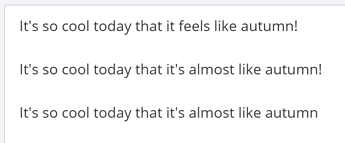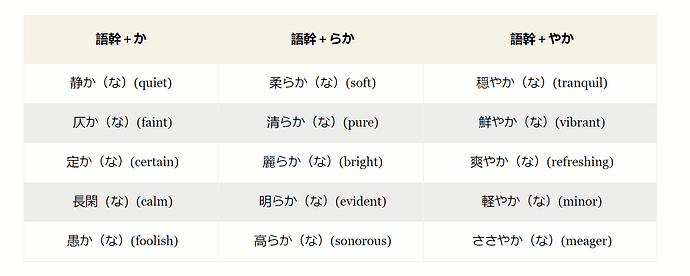Been trying to understand this literally and part of my problem at least I think is the “to the extent” stuff just confuses the heck out of me. There are just too many variations in translations overall that it’s hard to grasp the general meaning. Anyhow, spent a lot of time on this already and have some various examples but hoping someone could explain this grammar a bit better.
2 questions about this (what should be a simple) sentence:
今日は、秋かというくらいに、涼しい
Stripping away the middle stuff
今日は、 涼しい = As for today cold (literal translation)
Pretty sure I’m going to feel super dumb when this is explained but meh…really want to understand this (middle stuff):
秋か + というくらいに
1st question
Is that か the question marker or something else? Because if it’s the question marker then could it be written as 秋だか and mean the same thing (Is it fall)??
Originally I thought, it was the no 6 jisho def:
but cannot find any actual grammar references for using か as a suffice to form adjectives…but would make sense to say “autum-ish” or “autumy” maybe?
Of course telling the idiot native english speaker it comes after an indeclinable word (like I have any clue what these fancy grammar words mean) - tried to look it up but just more confusing… heck if I know if 秋 is declinable or indeclinable beats me
Or is this a contracted かな かもしれません of some kind… where it has the “I wonder/might” feeling?
2nd Question
というくらいに
What the heck is this… really hate that there are so many という uses 
A native speaker said it’s a set phrase (in itself but hasn’t gotten back to me with any other info yet).
The closest I could get was というところ which is here on bunpro but don’t know if exactly the same… the best I can do with this at the moment is this:
秋か = is it fall?
という+くらいに to say + to the extent
Literally the whole thing: “As for today it is cold, to the extent i say it is it fall?”
When I run it through DeepL I get this: “It’s so cool today that it feels like autumn!”
Realize that’s a bit of a mess (and train of thought) but for whatever reason I’m a bit lost …This feels more likely to be a fixed expression, and with DeepL throwing the “feels like autumn” puts the か more as an suffix.
As I said above sure I’ll feel dumb but figured someone smarter than me is out there that can probably explain this clearly (fingers crossed)










 ちょっと難しいなぁぁぁ。。。。
ちょっと難しいなぁぁぁ。。。。